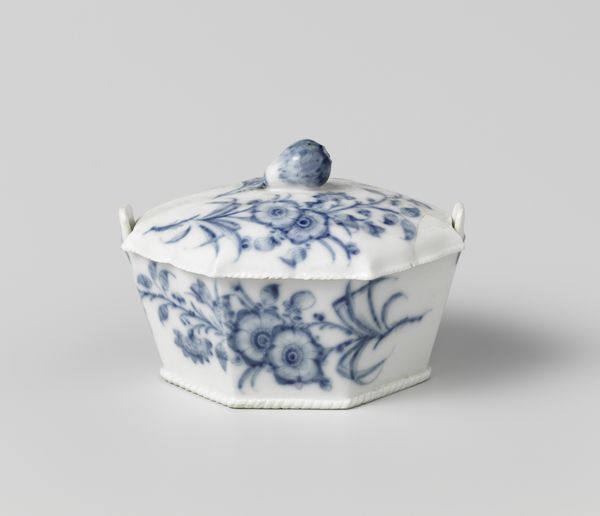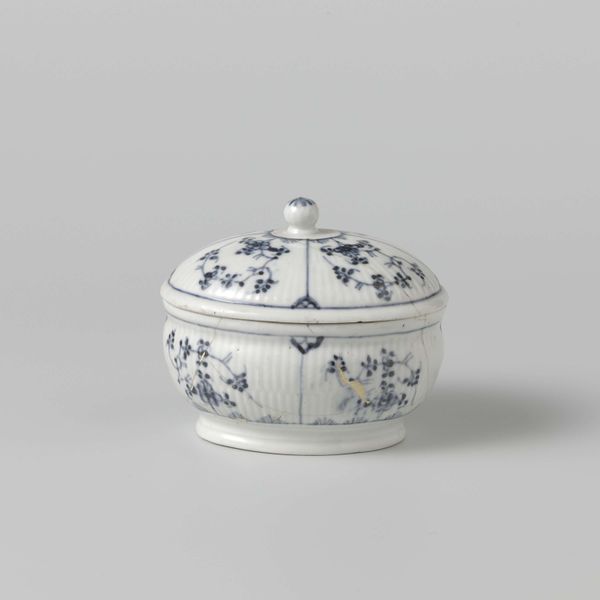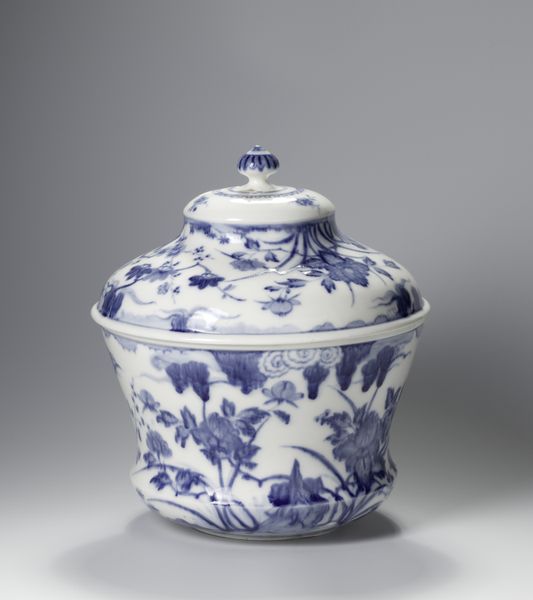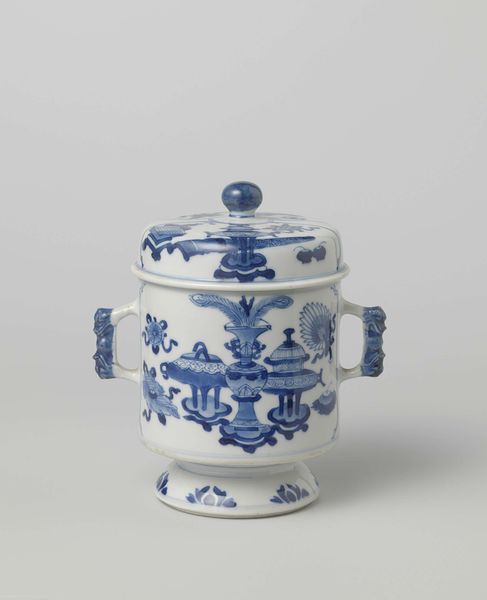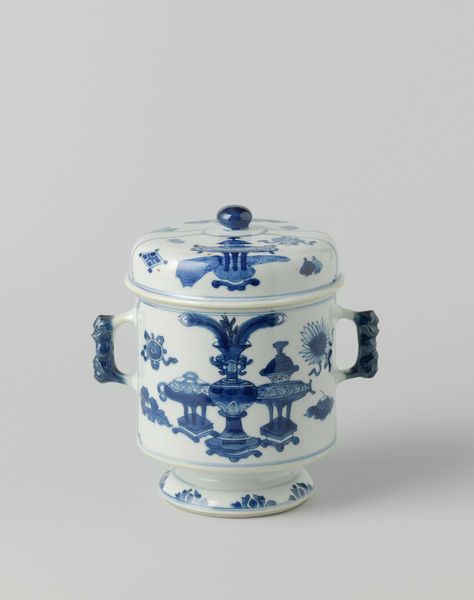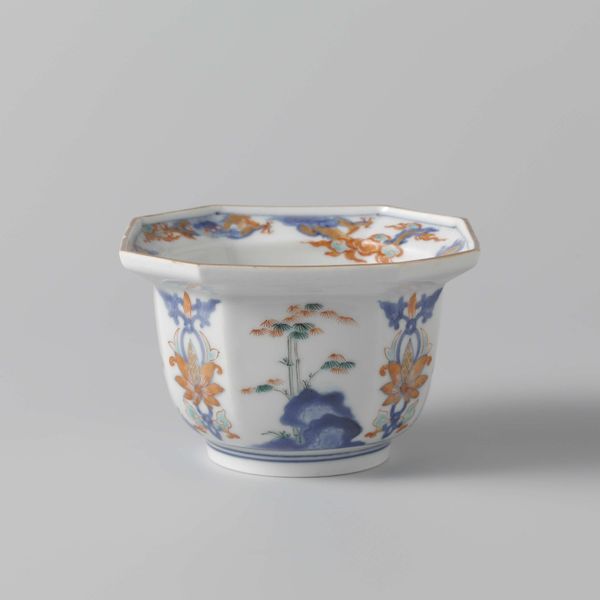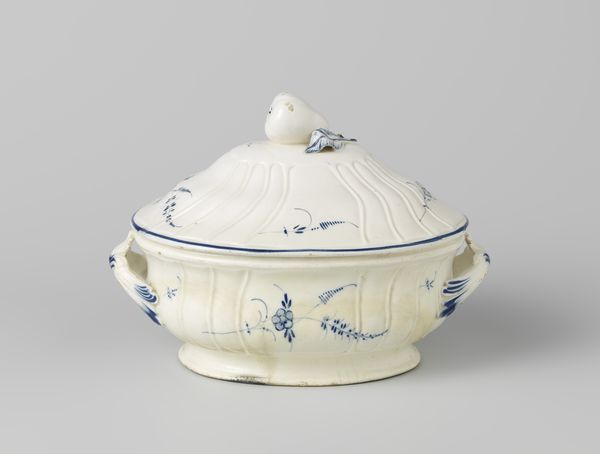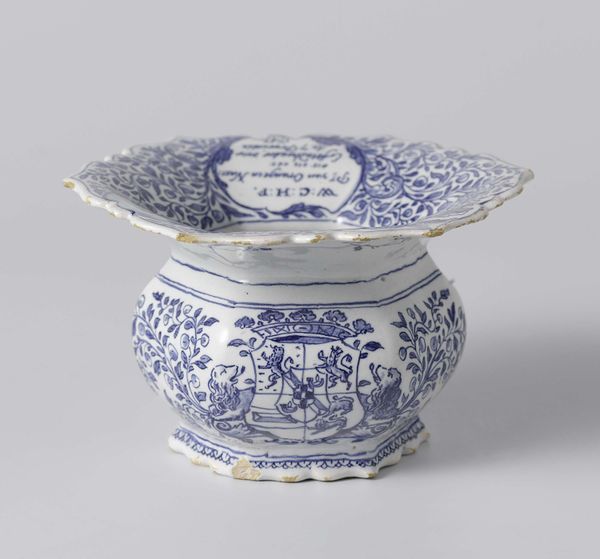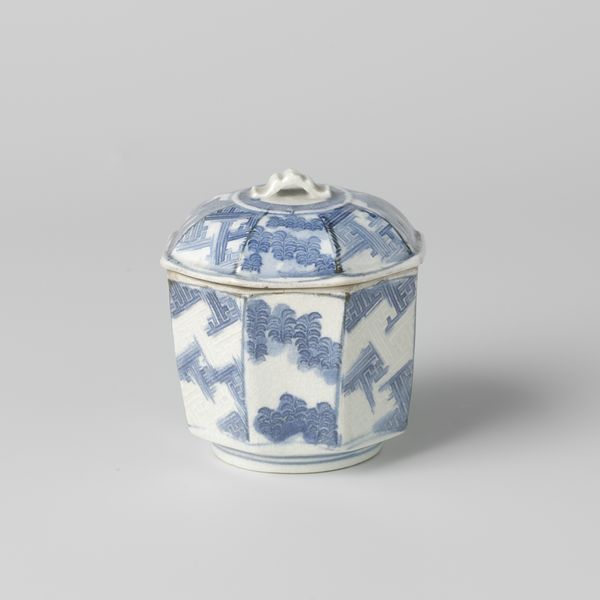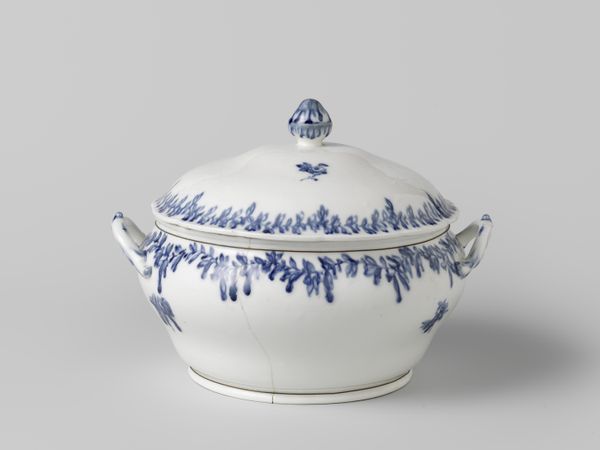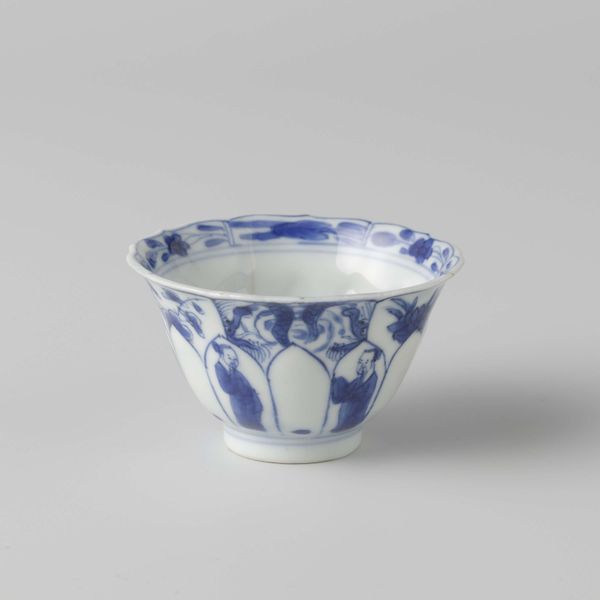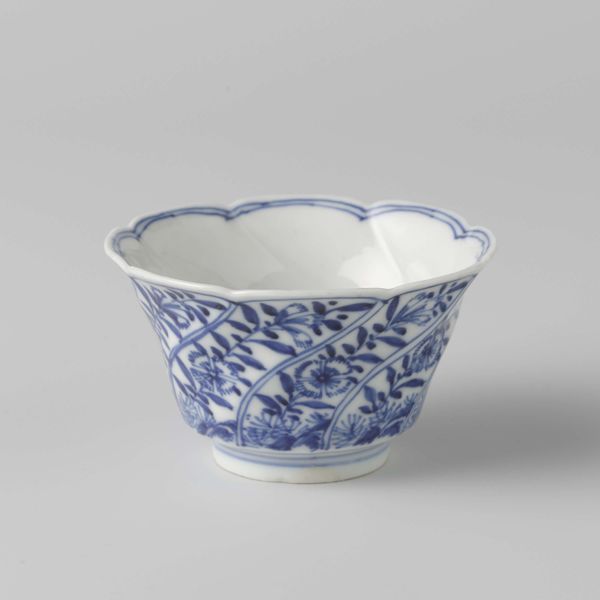
Deksel van botervloot, beschilderd met bloemtakken en vlinders c. 1778 - 1782
0:00
0:00
loosdrecht
Rijksmuseum
Dimensions: height 4 cm, width 12.2 cm, depth 10 cm
Copyright: Rijks Museum: Open Domain
Curator: Oh, this porcelain butter dish cover...it's so delicate. Editor: Isn’t it lovely? The blue and white are so crisp. There's something inherently soothing about it. Curator: It's a piece originating from the Loosdrecht factory, dating back to around 1778 to 1782. You can find it on display here at the Rijksmuseum. The painted floral sprays and butterflies exemplify the Rococo taste for the natural world and ornate elegance. Editor: Absolutely. I find myself particularly drawn to the details along the edges—that slightly raised, twisted rope pattern lends the piece additional textural interest. And that finial! Such a perfect complement. Curator: These objects were, in a sense, signifiers of status, embodying the aristocratic and affluent tastes of the period. Porcelain production, and certainly its display, was intertwined with social standing and power. Butter, in particular, would've been an item often associated with wealthy diets. Editor: I suppose. For me, though, the appeal lies in the artistry of the painter and the exquisite quality of the porcelain. The balance between negative space and ornamentation creates an exceptional harmony that defines Rococo aesthetic principles. Curator: Do you consider the functionality here at all? After all, a dish cover keeps food protected; the production is an answer to everyday necessities elevated with craftsmanship and style appropriate to that upper echelon. Editor: That’s definitely part of the context. I focus more on how these patterns draw your eye. From the buds along the cover to the larger blooms on the body of the container—each facet catches the light just so, making the porcelain almost seem luminous from within. It feels vibrant despite the restricted palette. Curator: Thinking about it further, one might even argue that its delicate nature serves as an emblem of the supposed fragility of the aristocracy on the cusp of revolutionary upheaval. Such finery perched precariously in a society ripe with social tensions. Editor: I can see that. Ultimately, it speaks volumes to the timeless allure and ingenuity achieved when function becomes art. Curator: And hopefully inspires conversations long after butter went out of style, to borrow a turn of phrase.
Comments
No comments
Be the first to comment and join the conversation on the ultimate creative platform.
